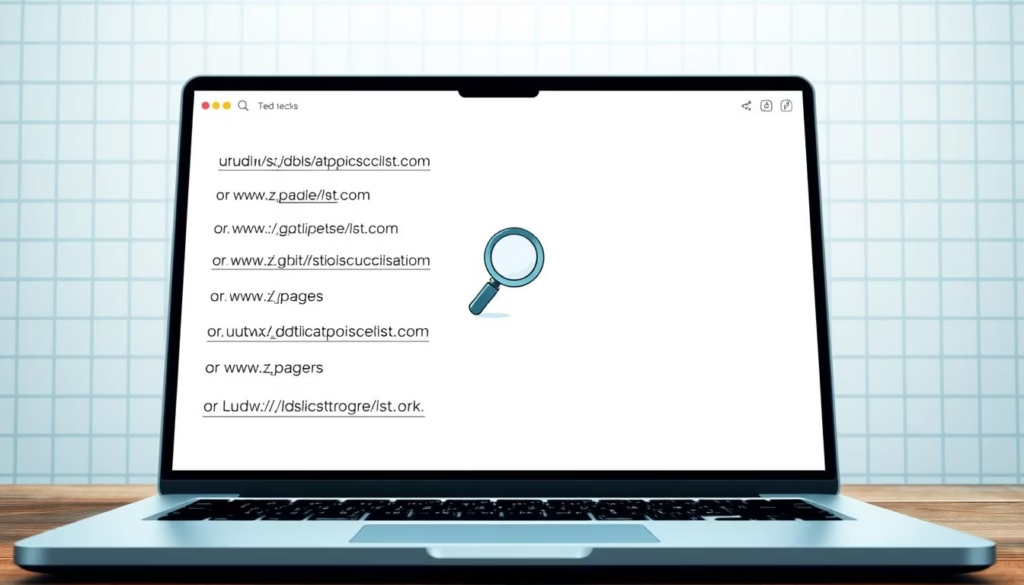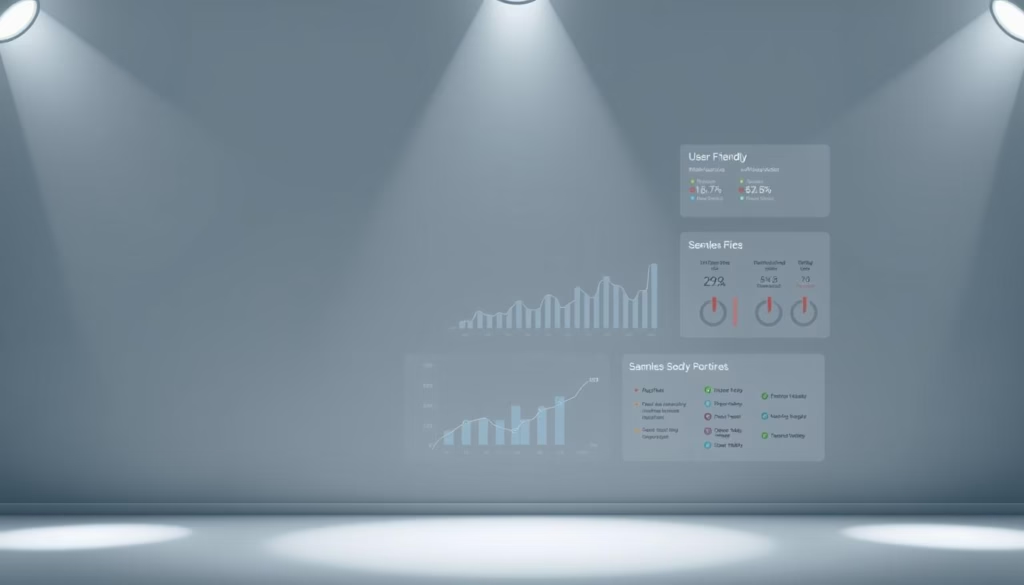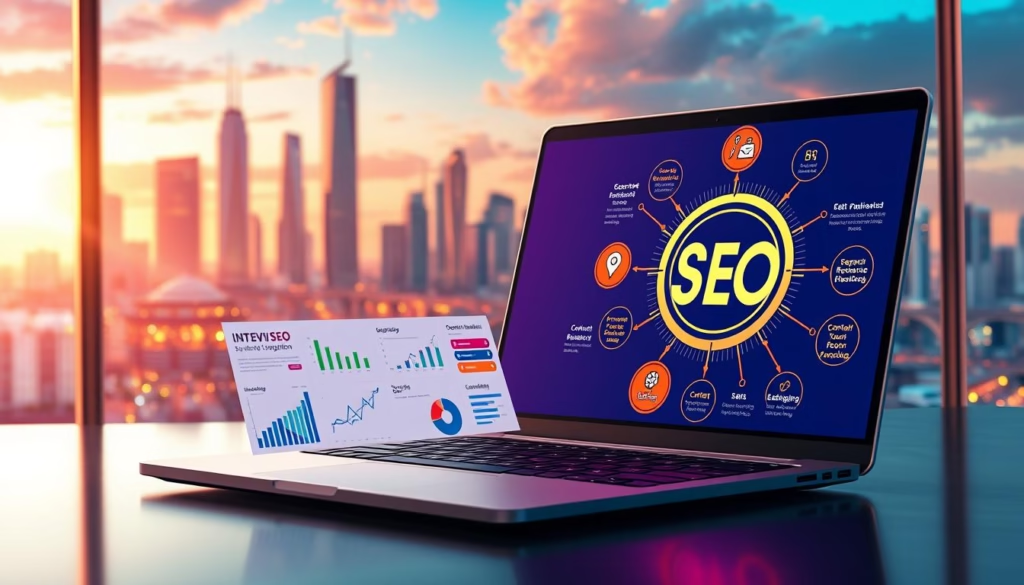Creating a strong online presence starts with understanding how search engines interact with your content. SEO isn’t just about ranking higher—it’s about making your website accessible and relevant to both users and automated crawlers. Google’s bots constantly scan the web, analyzing pages to determine what belongs in their index. Aligning with their guidelines ensures your site meets the basic requirements for visibility.
In this guide, I’ll break down the core principles that drive organic traffic. You’ll discover actionable strategies to improve technical performance, content quality, and user experience. These elements work together to help crawlers efficiently interpret your pages while delivering value to visitors.
Notes
Patience is critical in SEO. Results rarely happen overnight, but consistent effort builds lasting momentum. I’ll explain how factors like site structure and metadata influence indexing speed and ranking potential. By the end, you’ll have a clear roadmap to enhance your digital footprint.
SEO bridges the gap between user needs and search engine requirements.
- Google’s crawlers prioritize websites that follow technical best practices.
- Visibility depends on content clarity, site speed, and mobile compatibility.
- Optimization is a long-term strategy requiring regular adjustments.
- Balancing technical and creative elements drives sustainable growth.
Introduction to Search Engine Optimization
Navigating the digital world requires a map, and SEO is that guide. It’s the bridge between what people need and what search engines deliver. Unlike paid ads or social media campaigns, this strategy builds lasting visibility through technical precision and audience-focused content.
Understanding SEO and Its Benefits
Search engine optimization combines technical adjustments with creative storytelling. Here’s why it matters:
- Boosts organic traffic without ongoing ad costs
- Strengthens brand trust by appearing in top results
- Converts casual browsers into loyal customers
Google processes 3.5 billion queries daily. Nearly half of marketers say organic search delivers the best ROI. That’s because high rankings signal expertise, making users more likely to engage.
How Search Engines Find and Rank Content
Crawlers—automated bots—scan the web 24/7. They analyze page structure, keywords, and links to decide what gets indexed. Three factors dominate ranking algorithms:
- Relevance to the searcher’s intent
- Authority of your domain
- Positive user signals like time spent on pages
Your content must answer questions better than competitors. Even small tweaks, like improving load speed, help crawlers prioritize your site. Remember: SEO isn’t a race. It’s a marathon where consistency beats shortcuts.
The Importance of SEO in Today’s Digital Landscape
In a world where digital visibility dictates success, SEO shapes how businesses connect with their audience. Over 75% of users never scroll past the first page of search results. That’s why ranking high isn’t optional—it’s survival.
Consumers start nearly every purchase with a search. Whether researching products or comparing prices, they trust search engines to guide decisions. Brands appearing in top positions gain instant credibility. Think about it: would you click the fifth result or the first?
Here’s what separates winners from competitors:
- Organic traffic costs 61% less than paid ads
- High-ranking content builds authority over time
- Local searches drive foot traffic for brick-and-mortar stores
Unlike social media trends, SEO delivers lasting value. A single blog post can attract visitors for years. Combine this with mobile-friendly design and fast load times, and your website becomes a 24/7 salesperson.
Marketers using search strategies report 14.6% higher conversion rates. Why? Because SEO targets users actively seeking solutions. It’s not about interrupting—it’s about answering.
how to optimize your website for search engines
Elevating your site’s visibility demands a strategic blend of precision and adaptability. While technical adjustments matter, lasting success stems from aligning your SEO efforts with core user needs. Let’s explore actionable steps to balance these priorities.
Key Objectives for Better Rankings
Google’s algorithm rewards content that demonstrates expertise and solves problems. Focus on these priorities:
- Publish original articles weekly (26% of ranking weight)
- Include target keywords in meta titles (17% impact)
- Build authoritative backlinks through partnerships
Pages loading in under two seconds see 35% lower bounce rates. Mobile-friendly designs also influence ranking, especially since 60% of search traffic comes from phones.
Integrating SEO into Your Overall Strategy
Treat SEO as part of your marketing ecosystem—not an isolated task. Align blog topics with product launches, and repurpose content for social media. This creates synergy across channels.
Monitor user behavior metrics like time-on-page. Sites with high engagement often climb positions faster. Remember: improving website performance isn’t just for crawlers. It directly impacts visitor satisfaction.
Set quarterly benchmarks instead of daily checks. Most campaigns need 4-6 months to show measurable traction. Patience paired with consistent effort yields compounding returns.
On-Page SEO Best Practices
Mastering on-page elements transforms how crawlers interpret your site’s value. These foundational tweaks act like signposts, guiding both search algorithms and visitors toward your most important content. Let’s break down the essentials.
Optimizing Titles, Headings, and Meta Descriptions
Your title tag is the first handshake with crawlers. Keep it under 60 characters and lead with primary keywords. Research shows meta titles influence 17% of ranking decisions. Front-loading terms like “best hiking boots” instead of generic phrases boosts click-through rates.
Meta descriptions need precision. Aim for 155 characters—enough space to summarize the page while naturally weaving target phrases. Think of it as a movie trailer: intriguing but clear.
Headings organize your content hierarchy. Use H1 for the main topic, followed by H2s and H3s for subtopics. This structure helps users skim while signaling relevance to algorithms.
Strategic Keyword Placement in Content
Keywords belong in critical areas: URLs, opening paragraphs, and image alt text. But balance is key. Overstuffing triggers spam filters, while natural integration keeps readers engaged.
Focus on search intent. If your topic answers “how to fix a leaky faucet,” include related phrases like “repair tools” or “common plumbing mistakes.” Tools like AnswerThePublic reveal what searchers actually ask.
Internal links also matter. Connecting related pages strengthens topical authority. For example, a blog post about camping gear could link to your tent product page.
Remember: On-page SEO isn’t about tricks. It’s crafting content that satisfies curiosity while meeting technical standards. Get this right, and rankings follow.
Technical SEO Essentials
Behind every high-performing site lies a foundation of technical precision. While content grabs attention, the SEO infrastructure determines whether search engines can efficiently process your pages. Let’s unpack the hidden mechanics that keep your digital engine running smoothly.
Improving Site Speed and Mobile-First Design
Google now prioritizes mobile versions of pages for indexing. A responsive design isn’t optional—it’s mandatory. Core Web Vitals measure loading speed, interactivity, and visual stability. Pages scoring “good” in these metrics see 24% longer user experience engagement.
| Optimization Technique | Impact on Load Time | Implementation Difficulty |
|---|---|---|
| Image Compression | Reduces by 35-50% | Easy |
| Code Minification | Improves by 15-20% | Moderate |
| Server Response Optimization | Cuts delays by 30% | Advanced |
Prioritize HTTPS security—85% of users abandon non-secure pages. Tools like PageSpeed Insights identify bottlenecks. Even small fixes, like enabling browser caching, create measurable improvements.
Ensuring Crawlability and Indexability
Crawlers need clear pathways to discover web content. Start with XML sitemaps and a clean robots.txt file. Avoid complex URL parameters that confuse algorithms.
- Submit sitemaps through Google Search Console
- Use hyphens in URLs (site/blog/seo-tips vs. /blog_seo_tips)
- Fix broken links monthly—they waste crawl budget
Internal linking guides bots to priority pages. Sites with logical hierarchies rank 19% faster than disorganized competitors. Remember: technical SEO isn’t glamorous, but it’s the backbone of sustainable visibility.
Structured URLs, Metadata, and Alt Text Optimization

Every digital pathway on your site tells a story. Clear URLs, meaningful alt text, and precise meta details act as signposts for both visitors and algorithms. These elements build trust by making navigation intuitive and content accessible.
Creating Descriptive URLs and Using Breadcrumbs
A well-structured URL reflects your site’s hierarchy. Compare “example.com/blog/seo-tips” to “example.com/post?id=123.” The first instantly communicates the page’s purpose. Search engines use these paths to map relationships between pages.
Breadcrumbs reinforce this clarity. They appear in search results as clickable trails like Home > Blog > SEO Tips. This helps users backtrack while signaling topical depth to crawlers. Sites with breadcrumbs see 30% fewer bounce rates.
Alt text bridges visuals and context. Instead of writing “image123.jpg,” describe what’s shown: “black labrador retriever playing fetch.” This aids screen readers and helps algorithms index images for search. Key tips:
- Keep descriptions under 125 characters
- Avoid keyword stuffing (“best dog toys best prices”)
- Focus on accuracy and relevance
Metadata extends beyond titles. Structured data markup—like product ratings or event dates—can unlock rich snippets in results. These eye-catching previews improve click-through rates by up to 35%.
Creating Quality, User-Focused Content
Quality content bridges the gap between audience needs and search visibility. Google’s algorithms prioritize information that solves problems while maintaining natural readability. Research shows high-quality content influences 26% of ranking decisions—more than any single technical factor.
Effective writing starts with understanding what people truly want. Analyze forums, social media, and competitor gaps to uncover unanswered questions. Tools like Google Trends reveal rising topics your audience cares about right now.
Balancing Keywords With Natural Flow
Keywords matter, but forced repetition alienates readers. Instead, focus on semantic variations that match conversational queries. For example, “best running shoes for flat feet” could expand to include “arch support” or “stability features.”
| Approach | Example | Impact |
|---|---|---|
| Natural Integration | “These sneakers provide excellent arch support for runners.” | Higher engagement |
| Forced Stuffing | “Best arch support running shoes for flat feet cheap.” | Lower rankings |
| Contextual Use | “Podiatrists recommend these stability-focused options.” | Improved relevance |
Structure boosts scannability. Break content into sections with clear H2/H3 headings. Bullet points and numbered lists help users digest complex information quickly. Always proofread—spelling errors damage credibility faster than any algorithm update.
Remember: Write for humans first. Search engines reward content that keeps people engaged. When you prioritize value over vanity metrics, visibility follows naturally.
Enhancing User Experience and On-Site Engagement

The heartbeat of modern SEO lies in how visitors interact with your pages. Google tracks every click, scroll, and exit to assess content quality. Sites with low bounce rates and high engagement often climb search results faster—user signals influence 11% of rankings.
| Metric | Ideal Range | SEO Impact |
|---|---|---|
| Bounce Rate | Under 40% | High |
| Time on Page | Over 2 minutes | Medium |
| Pages/Session | 3+ | Critical |
Design intuitive menus that guide visitors effortlessly. Confusing layouts increase exit rates by 37%. Use breadcrumb navigation and internal links to keep users exploring related topics.
Speed remains non-negotiable. Mobile pages loading in 1.3 seconds see 26% higher conversions. Tools like Lighthouse identify performance gaps. Prioritize lazy loading for images and defer non-critical scripts.
Avoid pop-ups that block content. Sites using intrusive ads experience 52% shorter session durations. Instead, place CTAs strategically—like after key paragraphs—to maintain flow.
Remember: Every user action tells a story. Align technical tweaks with human behavior to build a site that satisfies both algorithms and real people.
Strategies for Earning High-Quality Backlinks
Building authority in search rankings requires more than great content. It demands partnerships with trusted sources. Backlinks from reputable sites account for 15% of Google’s ranking criteria. A single link from an industry leader can outperform dozens of low-quality connections.
Outreach Techniques That Deliver Results
Start by identifying businesses or blogs aligned with your niche. Tools like Ahrefs reveal who links to competitors. Craft personalized emails highlighting shared audiences—not just your needs. Example:
- “I noticed your guide on sustainable packaging. My recent case study on biodegradable materials could add value.”
Focus on mutual benefit. Offer to share their content with your network in exchange for a mention. Avoid generic templates—82% of webmasters ignore them.
Guest Posting Done Right
Contributing articles to authoritative platforms builds links and credibility. Prioritize quality over quantity. A well-researched piece on Forbes drives more traffic than 10 random blog features.
| Effective Approach | Ineffective Tactic |
|---|---|
| Publishing data-driven reports | Mass-produced articles |
| Linking to 1-2 relevant pages | Overloading with anchor text |
Always review editorial guidelines. Sites like HubSpot require bylines to avoid self-promotion. Steer clear of link farms—Google penalizes 63% of manipulative schemes.
Remember: Earned links reflect genuine value. Combine outreach with exceptional resources, and watch your domain authority climb.
Mobile Optimization and Responsive Design Strategies
Smartphones now drive 60% of global web traffic. Google’s mobile-first indexing means your site must perform flawlessly on smaller screens. I prioritize responsive designs that adapt layouts based on device size. This approach satisfies both users and search engines crawling mobile versions first.
Improving Load Times on Mobile Devices
Mobile pages loading slower than 3 seconds lose 53% of visitors. Start by compressing images without sacrificing quality. Formats like WebP reduce file sizes by 30% compared to JPEG. Enable lazy loading so below-the-fold content only appears when scrolling.
I recommend using Accelerated Mobile Pages (AMP) for critical sections like blog posts. This framework strips unnecessary code, cutting load times by 50-85%. Combine this with browser caching—returning visitors experience near-instant access.
Test your website with Google’s Mobile-Friendly Tool. It identifies issues like oversized buttons or unreadable text. Fixing these improves user experience while aligning with search engine requirements. Remember: speed and functionality define mobile success.
FAQ
How does mobile-first design affect search engine rankings?
Google prioritizes mobile-friendly sites in its ranking algorithms. I ensure responsive layouts, fast load times, and touch-friendly navigation to align with mobile-first indexing. Tools like Google’s Mobile-Friendly Test help validate performance.
What role do backlinks play in SEO success?
High-quality backlinks from authoritative domains like Forbes or Moz act as trust signals. I focus on earning links through guest posting, partnerships, and creating shareable content rather than buying them.
Can social media activity influence search results visibility?
While social shares aren’t a direct ranking factor, platforms like Twitter and LinkedIn amplify content reach. Viral posts often attract organic backlinks, which indirectly boost rankings. I integrate social sharing buttons to encourage engagement.
Why is page speed critical for user experience and SEO?
Slow sites frustrate visitors and increase bounce rates. I optimize images with tools like TinyPNG, leverage browser caching, and use CDNs like Cloudflare. Google’s Core Web Vitals metrics also tie speed to rankings.
How do meta descriptions impact click-through rates?
Compelling meta descriptions act as ad copy in SERPs. I keep them under 155 characters, include primary keywords like “best running shoes,” and emphasize value propositions to entice clicks from search results pages.
Should I prioritize keywords over content quality?
Never. Google’s E-E-A-T guidelines reward expertise and authenticity. I naturally blend keywords like “affordable yoga mats” into comprehensive guides, ensuring content solves problems without stuffing terms.
What’s the best way to structure URLs for crawlability?
I create clean, descriptive URLs (e.g., /blog/seo-tips-2024) with hyphens separating words. Avoid dynamic parameters—stick to static paths. Breadcrumbs also help users and bots navigate category hierarchies.
How often should I update blog posts for freshness?
I audit content quarterly, adding recent stats or examples. Evergreen topics like “how to tie a tie” need fewer updates, while trend-focused pieces (e.g., “AI marketing tools 2024”) require monthly revisions.
Does alt text improve visibility in image search results?
Yes. Alt text helps Google understand visuals. I describe images concisely (e.g., “red Nike running shoes on trail”) and avoid generic terms like “image123.jpg.” This boosts accessibility and image SEO.
Are breadcrumbs necessary for site navigation?
Breadcrumbs enhance user experience by showing page hierarchy (Home > Blog > SEO Tips). They reduce bounce rates and help search engines like Bing contextualize content. I implement them via plugins or structured data.
Related posts:
 Explore CISSP Domain 5: Identity & Access Management
Explore CISSP Domain 5: Identity & Access Management
 CISSP Domain 6: Security Assessment and Testing Guide
CISSP Domain 6: Security Assessment and Testing Guide
 CISSP Domain 7: Security Operations Essential Guide
CISSP Domain 7: Security Operations Essential Guide
 How to Turn Old Phone into a Security Camera: My Step-by-Step Guide
How to Turn Old Phone into a Security Camera: My Step-by-Step Guide
 Learn How to use QR codes for payments/sharing with My Tips
Learn How to use QR codes for payments/sharing with My Tips
 Learn How to Build a Mobile-Responsive Website Effectively
Learn How to Build a Mobile-Responsive Website Effectively











